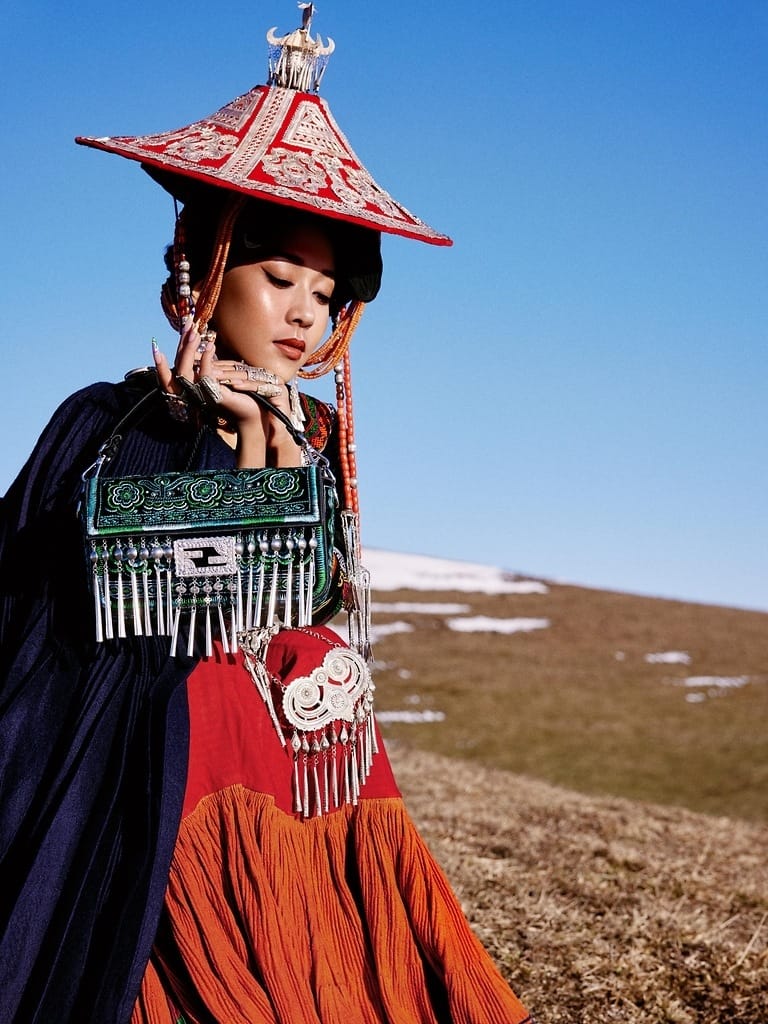Shein may be headed to the UK to list on the London Stock Exchange.
🤔What’s going on?
Over the past decade, a handful of Chinese companies have seen a lot of success outside of home. One of the biggest examples is ByteDance’s TikTok. There’s also Tencent, Alibaba and BYD. But there’s another one that’s dominated headlines worldwide. Whether it’s because of its highly-anticipated initial public offering (IPO) or another copyright infringement lawsuit – yep, you guessed it, Shein.
Shein, an online fast fashion brand founded in China and now headquartered in Singapore, filed confidential paperwork in the UK in June suggesting that it may list on the London Stock Exchange soon. This comes after the brand walked back its plans to list in New York because of tensions between the US and China. And while Shein is no longer headquartered in China, its manufacturing and employment operations are still largely based in the mainland.
The potential IPO has turned the spotlight onto the world of online fashion, which is still adjusting to the post-pandemic boom when lockdowns and social distancing created a massive demand for online shopping. Specifically, according to The Business Research Company, the global online fashion industry market size is expected to top US$905 billion in 2024, compared to US$821 billion in 2023. But, with this growth, it begs the question, what impact does fashion, particularly fast fashion – have on the environment?
🌍The environmental impact of fast fashion
Shein hit a record of over US$2 billion in profits in 2023, which was more than double what it made in 2022, and it recorded a gross merchandise value of around US$45 billion, according to the Financial Times. In May, the Startup Success Index by Vention named Shein the most successful startup of the past decade.
But it also might be the most extreme example of fast fashion, a business model based on the quick production of cheap, trendy clothing. For example, Shein can have as many as 600,000 products listed for sale at a time. To put this into perspective, Wired reported in 2022 that Sheng Lu, a professor at the University of Delaware, had compared different fast fashion brands over a 12-month period. Lu found that during this period, the Gap listed about 12,000 different items on its website, H&M had about 25,000 and Zara had roughly 35,000. But in the same period, Shein had 1.3 million.
In recent years, fast fashion as an industry has been heavily criticized for its environmental impact. It’s estimated that 92 million tonnes of textiles are thrown away every year and that many pieces of clothing are only used seven to 10 times before being tossed out. According to a 2017 report by the Ellen MacArthur Foundation, the number of times a piece of clothing was worn dropped 36% over a span of 15 years.
Products used in the dyeing and finishing process of textiles are estimated to make up 20% of global water pollution, and the world’s fashion industry has also been estimated to contribute 10% to global emissions, a number that is expected to rise by 50% before 2030 if things keep going the way they are. And even though there’s growing awareness of climate change and the need to protect biodiversity, the market size of the global textile manufacturing industry more than doubled between 2000 and 2020.
Rebecca Ling, the founder of Parallel 51, an online-to-offline fashion brand that focuses on long-lasting and re-wearable wardrobes, told TMS that Shein’s fast fashion is “so extreme” that even people who are not necessarily thinking about sustainable fashion are sitting up and asking themselves, “What impact will [that form of shopping] have on the environment?”
“I think for people who are on the fence [about fast fashion], who may want to think about their shopping habits, a brand like Shein maybe will make them think twice about the impact that fast fashion is having,” she said.
Shein appears to be very aware of the sustainability concerns surrounding its brand, and the company launched a nearly €200 million (US$218 million) “circularity fund” to tackle fashion waste. The goal of that money is to inject cash into startups trying to solve the problem. Shein has also started using recycled materials and recyclable packaging. And, while the brand can have hundreds of thousands of items up for sale at a time, it has said it only produces small batches (50-100) at a time, producing more only when people order it. Items that don’t generate a lot of interest are then discontinued. In this way, Shein has said it’s business model differs from typical fast fashion because it’s producing “on demand.”
👗Finding sustainable solutions
While Shein and other fast fashion retailers face concerns about sustainability, many online fashion brands are actively trying to promote alternative, more sustainable mindsets for e-commerce. Parallel 51, for example, sells “multi-wear designs” that are meant to be “functional fashion” designed to prevent closet churn, which is essentially when you have stuff constantly cycling through your wardrobe. The brand also doesn’t ask manufacturers to dye clothing, helping to reduce water pollution.
“I think it's about little choices that you can make in the manufacturing process that will then have an impact from the sustainability perspective,” said Ling.
Another example of a sustainability-focused brand is Vestiaire Collective, which sells pre-loved luxury items and aims to create a more circular production cycle. The company focuses on reselling items but also tries to sell goods locally, dropping its usage of air freight from 50% of deliveries in 2020 to 31% in 2023.
“In today’s climate of inflation, it is obvious: neither people nor planet can afford fast fashion. This report sounds the alarm on fast fashion’s devastating impact, and should be a wake-up call to all to end overconsumption and overspending,” wrote Vestiaire President and Co-founder Fanny Moizant in the company’s 2024 circularity report.
Infinite Goods, a brand focused on women’s fashion, has made sustainability a core part of its mission statement. It has launched a self-reported sustainability score, in which it grades itself on metrics for environmental impact and an ethical workforce along the supply line. For example, it has graded 45% of its products with an “A” rating, 45% with a “B” rating and 10% with a “C” rating.
But sustainability takes trial and error, and Ling pointed out that “no brand is sustainable from day one.” “It's a journey for us, and we're trying to take it step by step to reach 100% sustainability goals,” she said.
❓What’s going on with fast fashion in China?
As Shein expands its footprint globally, domestic fast fashion brands are thriving in China. A recent report from Canvas8, a global strategic insights practice with expertise in cultural and behavioral trends, found that the growth of homegrown online fashion features a fairly specific phenomenon: China is currently experiencing a guochao or “national wave” movement. This movement, which is being actively promoted by mainland authorities, refers to the growing trend of Chinese shoppers (especially millennials and Gen-Z) preferring local companies that embrace elements of traditional Chinese culture and style.
The trend has led to young people embracing fashion trends like hanfu, a catch-all phrase that refers to traditional Han Chinese clothing. It also has meant Chinese shoppers are avoiding foreign brands and trying to spend their money locally, with Canvas8 reporting that “49% of shoppers in China prefer or only consider domestic brands when purchasing clothing, shoes, and/or hats.”
Xiaojing Huang, a trend expert and chief editor of China Design Trends Report, told TMS that sales of “ancient style” clothing have grown by 300% among Gen Z for two consecutive years.
“In daily life, young people experience the beauty of Chinese culture by wearing Han-style clothes, and they feel more self-confident about Chinese culture,” she said.
This reality has pivoted business decisions for foreign brands, such as Gap selling its mainland China and Taiwan businesses to Baozun, an e-commerce shop, for US$50 million, with the expectation that Baozun would be more effective at selling Gap merchandise in the region.
Huang said that foreign brands do not need to be excluded from this trend and that global companies can “add artistic and handcraft elements to new product collections as well as pay respect to the Chinese tradition at the same time.”
She pointed TMS to a FENDI Baguette “hand in hand” collection that uses stitching techniques from the Yi ethnic groups in the handbag series.

As for Shein, while hanfu-style clothes are not prominently advertised on versions of the site outside China, they are easy enough to find with a simple search.
💬What people are saying
“I think not following trends is really important, one from a sustainability angle, but two, to actually really develop your own personal style and just like develop a wardrobe that works for you and suits you.”
– Rebecca Ling, the founder of Parallel 51
“Our financial resources, our scale and leverage [means] we can be, and we will be, a significant guinea pig or applicator of these technology or processes.”
– Donald Tang, Executive Chairman of Shein, speaking about its US$219 million fund to tackle fashion waste
“The rise of guochao goes beyond fashion; it signifies a broader embrace of national identity and cultural revival, influencing consumer choices across sectors.”
– Ambra Schillirò, founder of Social Cloud and co-founder of China Fashion Group
“Fast fashion is the industry’s biggest challenge.”
– Vestiaire Collective blog
“There is a sign of rising self-confidence and a willingness to appreciate oneself as well as the nation.”
– Xiaojing Huang, trend expert and chief editor of China Design Trends Report, speaking about the guochao trend





Comments ()